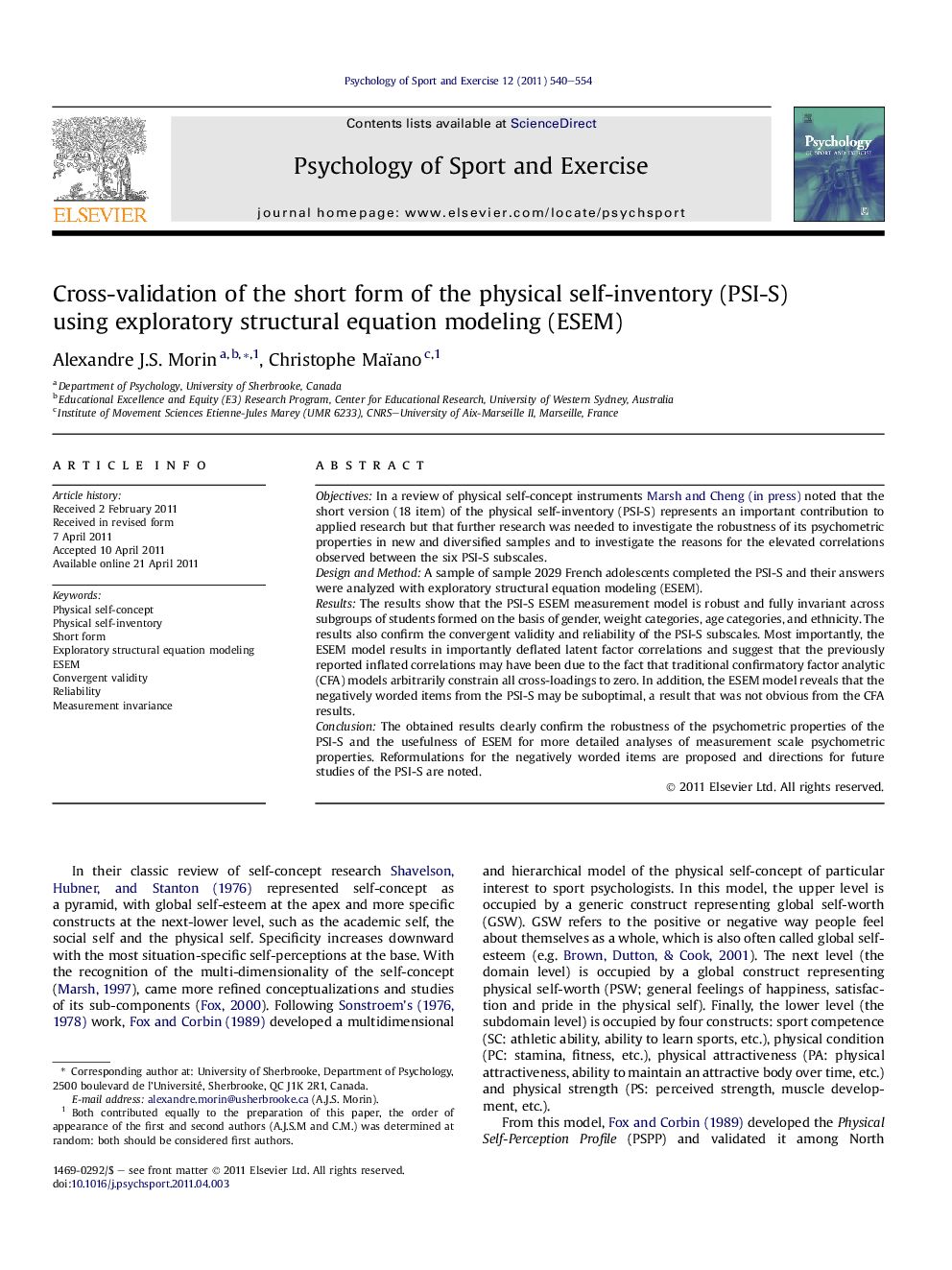| کد مقاله | کد نشریه | سال انتشار | مقاله انگلیسی | نسخه تمام متن |
|---|---|---|---|---|
| 894643 | 1472133 | 2011 | 15 صفحه PDF | دانلود رایگان |

ObjectivesIn a review of physical self-concept instruments Marsh and Cheng (in press) noted that the short version (18 item) of the physical self-inventory (PSI-S) represents an important contribution to applied research but that further research was needed to investigate the robustness of its psychometric properties in new and diversified samples and to investigate the reasons for the elevated correlations observed between the six PSI-S subscales.Design and MethodA sample of sample 2029 French adolescents completed the PSI-S and their answers were analyzed with exploratory structural equation modeling (ESEM).ResultsThe results show that the PSI-S ESEM measurement model is robust and fully invariant across subgroups of students formed on the basis of gender, weight categories, age categories, and ethnicity. The results also confirm the convergent validity and reliability of the PSI-S subscales. Most importantly, the ESEM model results in importantly deflated latent factor correlations and suggest that the previously reported inflated correlations may have been due to the fact that traditional confirmatory factor analytic (CFA) models arbitrarily constrain all cross-loadings to zero. In addition, the ESEM model reveals that the negatively worded items from the PSI-S may be suboptimal, a result that was not obvious from the CFA results.ConclusionThe obtained results clearly confirm the robustness of the psychometric properties of the PSI-S and the usefulness of ESEM for more detailed analyses of measurement scale psychometric properties. Reformulations for the negatively worded items are proposed and directions for future studies of the PSI-S are noted.
► This study tests the robustness of the 18-item physical self-inventory (PSI-S).
► These questions are addressed with exploratory structural equation modeling (ESEM).
► The PSI-S measurement model is invariant across gender, weight, age, and ethnicity.
► The results confirm the convergent validity and reliability of the PSI-S subscales.
► SEM suggests that inflated correlations were due to crossloadings.
Journal: Psychology of Sport and Exercise - Volume 12, Issue 5, September 2011, Pages 540–554